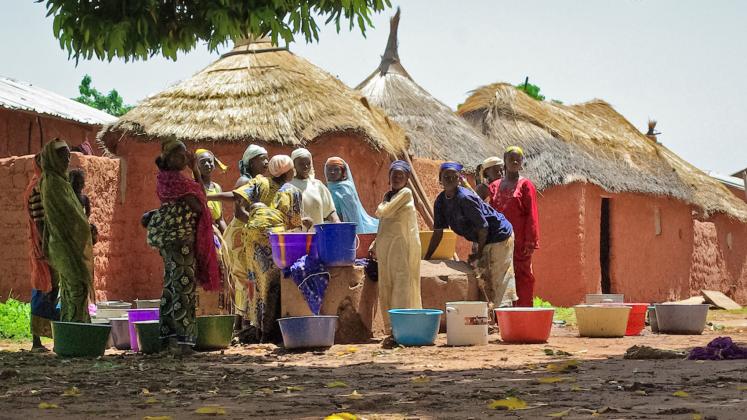The adverse effects of unsafe water on health have been widely acknowledged. But the comprehensive analysis of this impact remains poorly documented and overlooked.
A new report by the United Nations University Institute for Water, Environment and Health (UNU-INWEH) — “Unmasking the Unseen: The Gendered Impacts of Water Quality, Sanitation and Hygiene” — underscores the largely unseen gender disparities in exposure to health-related risks of non-utility water sources i.e. water sources not supported by government infrastructure, in Abeokuta, Nigeria.
Poor water quality leads to severe consequences on human health and well-being, including morbidity and mortality from water-related diseases affecting millions annually. These impacts disproportionately affect women, men, boys, and girls due to inequalities stemming from physiological composition, age, socioeconomic conditions, disability, and restrictive social norms. Such disproportional effects are further exacerbated by unequal control and access to water, sanitation, and health services.
“These disparities highlight the urgent need for gender-sensitive interventions to address water-related health issues and promote equitable access to safe water and sanitation facilities in the region,” said Prof. Grace Oluwasanya, a senior researcher in water, climate and gender at UNU-INWEH who led this investigation.
The new UNU study showcases the importance of Differential Impact Assessment (DIA) as a vital tool for unravelling not only the complex impacts of water-related challenges but also for exposing the often-unseen gendered disparities of these impacts.
The UNU scientists found that the non-utility water sources in the study area were contaminated with enteric and opportunistic pathogens, including Actinobacter spp., Vibrio cholerae, Shigella dysenteriae/salmonella typhi, and Escherichia coli., raising serious concerns about water safety. These water sources also showed high levels of water hardness and elevated calcium levels, posing significant health risks, especially for men and boys, with an exceptionally high Hazard Index ranging from 784 to 2971 across all the water sources. This is of particular importance for persons with underlying conditions like parathyroid disorders, vitamin D excess, milk alkaline syndrome, and certain cancers, as they may be at risk of developing bone disorders, kidney stones, and ultimately, kidney damage due to water hardness.
The report found worrying gender disparities in water-related diseases and hygiene practices within the sampled population. Water-related illnesses ranked highest among diagnosed health cases at primary healthcare centers, disproportionately affecting women. Malaria emerged as the most prevalent illness, constituting 68% of cases, while other conditions such as pelvic inflammatory disease/urinary tract infection and skin/dermal infections were also observed.
The study underscores disparities in water source utilization, with women and girls relying predominantly on packaged sachet water for drinking, while men and boys more frequently use boreholes and hand-dug wells. Additionally, discrepancies in access to sanitation facilities reveal troubling trends, as women often lack adequate handwashing facilities compared to men and children.
According to the study results, children, particularly girls, bear a disproportionate burden of water collection activities, leading to fatigue and adverse health effects. Women's primary responsibility for toilet cleaning exposes them to health risks associated with exposure to volatile organic compounds found in disinfectants. While men and boys may face increased risks of diseases like diarrheal illnesses due to poor hygiene practices, women may be more vulnerable to health effects like throat irritation and nausea.
“This report calls for fundamental reforms in existing water-related impact monitoring, especially in the wake of global gearing for effective water-climate actions,” said UNU-INWEH Director, Prof. Kaveh Madani. “Differential analysis utilizing data disaggregated by gender has been traditionally neglected in water-related impact monitoring, creating a major barrier to inclusive development. The lack of a standardized protocol for systematically differentiating data based on gender and age is a contributing factor to the oversight of the disproportional impacts of inadequate WASH services on different genders, leading to increased inequalities and environmental injustice.”
The authors hope their piloted differential assessment methodology can facilitate gender-disaggregated data sourcing in low- and middle-income countries (LMICs) and promote interdisciplinary interrogation of water-health-gender intersections. “Addressing gendered impacts on health and well-being demands implementing multifaceted solutions that prioritize equitable access to WASH services, promote better menstrual hygiene, empower women economically, and ensure the active participation of all genders in decision-making processes,” said Oluwasanya.
Download the report: “Unmasking the Unseen: The Gendered Impacts of Water Quality, Sanitation and Hygiene”
Media Contacts
- Kyra Bowman, UNU Head of Communications bowman@unu.edu
The UNU research team is available for interviews:
- Prof. Grace Oluwasanya, Senior Researcher: Water, Climate and Gender, UNU-INWEH, grace.oluwasanya@unu.edu
- Kaveh Madani, Director, UNU-INWEH, kaveh.madani@unu.edu


